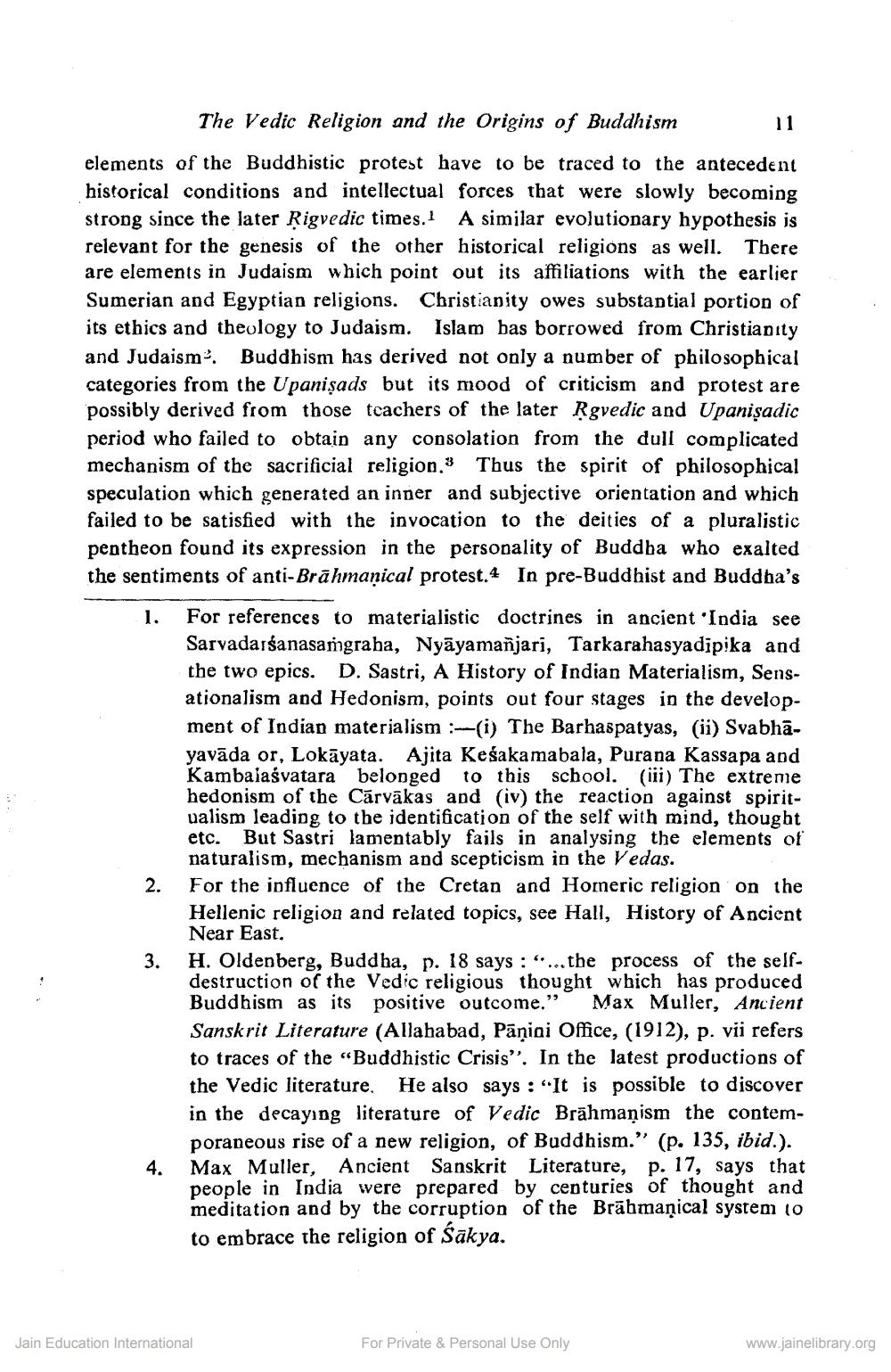________________
The Vedic Religion and the Origins of Buddhism
11
elements of the Buddhistic protest have to be traced to the antecedent historical conditions and intellectual forces that were slowly becoming strong since the later Rigvedic times. A similar evolutionary hypothesis is relevant for the genesis of the other historical religions as well. There are elements in Judaism which point out its affiliations with the earlier Sumerian and Egyptian religions. Christianity owes substantial portion of its ethics and theology to Judaism. Islam bas borrowed from Christianity and Judaism. Buddhism has derived not only a number of philosophical categories from the Upanişads but its mood of criticism and protest are possibly derived from those tcachers of the later Rgvedic and Upanisadic period who failed to obtain any consolation from the dull complicated mechanism of the sacrificial religion. Thus the spirit of philosophical speculation which generated an inner and subjective orientation and which failed to be satisfied with the invocation to the deities of a pluralistic pentheon found its expression in the personality of Buddha who exalted the sentiments of anti-Brāhmanical protest.4 In pre-Buddhist and Buddha's
1.
2.
For references to materialistic doctrines in ancient 'India see Sarvadarśanasangraha, Nyāyamañjari, Tarkarahasyadipika and the two epics. D. Sastri, A History of Indian Materialism, Sensationalism and Hedonism, points out four stages in the development of Indian materialism :-(i) The Barhaspatyas, (ii) Svabhayavāda or, Lokāyata. Ajita Kesakamabala, Purana Kassapa and Kambaiaśvatara belonged to this school. (ii) The extreme hedonism of the Cārvākas and (iv) the reaction against spiritualism leading to the identification of the self with mind, thought etc. But Sastri lamentably fails in analysing the elements of naturalism, mechanism and scepticism in the Vedas. For the influence of the Cretan and Homeric religion on the Hellenic religion and related topics, see Hall, History of Ancient Near East. H. Oldenberg, Buddha, p. 18 says: “...the process of the selfdestruction of the Vedic religious thought which has produced Buddhism as its positive outcome.” Max Muller, Ancient Sanskrit Literature (Allahabad, Panini Office, (1912), p. vii refers to traces of the Buddhistic Crisis". In the latest productions of the Vedic literature. He also says : "It is possible to discover in the decaying literature of Vedic Brāhmaṇism the contemporaneous rise of a new religion, of Buddhism." (p. 135, ibid.). Max Muller, Ancient Sanskrit Literature, p. 17, says that people in India were prepared by centuries of thought and meditation and by the corruption of the Brāhmaṇical system lo to embrace the religion of Sakya.
3.
Jain Education International
For Private & Personal Use Only
www.jainelibrary.org




